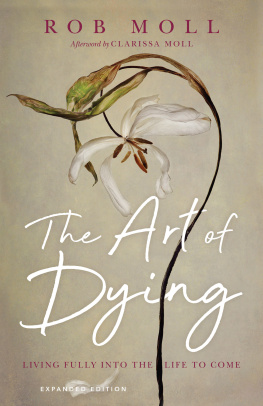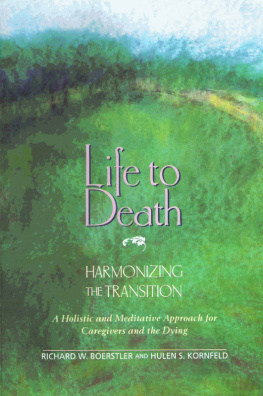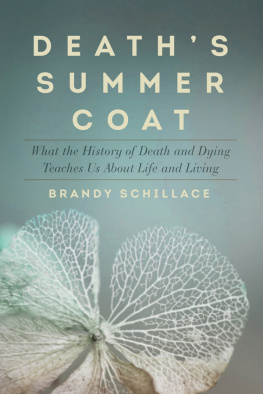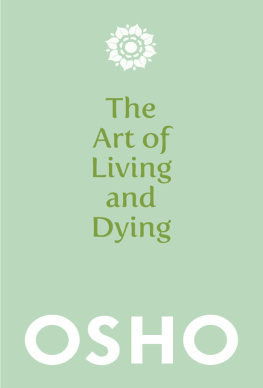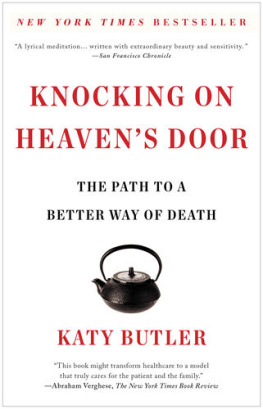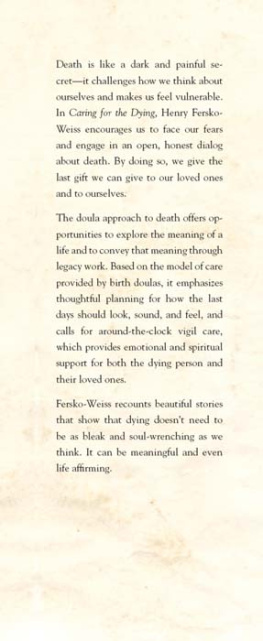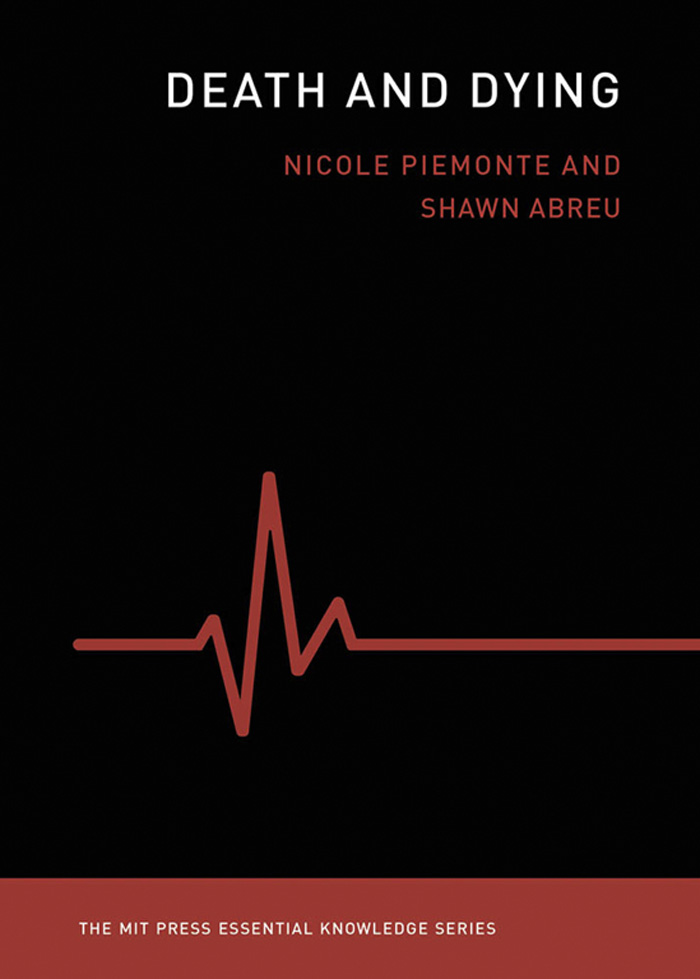
Death and Dying
The MIT Press Essential Knowledge Series
A complete list of the titles in this series appears at the back of this book.
Death and Dying
Nicole Piemonte and Shawn Abreu
The MIT Press | Cambridge, Massachusetts | London, England
2021 Massachusetts Institute of Technology
All rights reserved. No part of this book may be reproduced in any form by any electronic or mechanical means (including photocopying, recording, or information storage and retrieval) without permission in writing from the publisher.
The MIT Press would like to thank the anonymous peer reviewers who provided comments on drafts of this book. The generous work of academic experts is essential for establishing the authority and quality of our publications. We acknowledge with gratitude the contributions of these otherwise uncredited readers.
This book was set in Chaparral Pro by New Best-set Typesetters Ltd.
Library of Congress Cataloging-in-Publication Data
Names: Piemonte, Nicole, author. | Abreu, Shawn, author.
Title: Death and dying / Nicole M. Piemonte and Shawn Abreu.
Other titles: MIT Press essential knowledge series.
Description: Cambridge, Massachusetts : The MIT Press, [2021] | Series: MIT Press essential knowledge series | Includes bibliographical references and index.
Identifiers: LCCN 2020027077 | ISBN 9780262542425 (paperback)
Subjects: MESH: Death | Attitude to Death | Right to Die | Hospice Care | Terminal Care
Classification: LCC BF789.D4 | NLM BF 789.D4 | DDC 155.9/37dc23
LC record available at https://lccn.loc.gov/2020027077
10 9 8 7 6 5 4 3 2 1
d_r0
To Joy and Ralph Piemonte, who went before us and taught us so muchand to all of those who have shown us the fullness of life while facing its end.
Contents
Series Foreword
The MIT Press Essential Knowledge series offers accessible, concise, beautifully produced pocket-size books on topics of current interest. Written by leading thinkers, the books in this series deliver expert overviews of subjects that range from the cultural and historical to the scientific and technical.
In todays era of instant information gratification, we have ready access to opinions, rationalizations, and superficial descriptions. Much harder to come by is the foundational knowledge that informs a principled understanding of the world. Essential Knowledge books fill that need. Synthesizing specialized subject matter for nonspecialists and engaging critical topics through fundamentals, each of these compact volumes offers readers a point of access to complex ideas.
Preface
Death is all around us. I mean this in the abstract sense, of course: death is inevitable and inescapable, an undeniable part of the human condition. But I also mean this in the personal sense: its all around usShawn and mewho both work in medicine and see sickness and death all the time. Shawn is a doctor who practices hospice and palliative medicine, and I am a faculty member and assistant dean at a medical school as well as a researcher with a focus in medical humanities and end-of-life carean academic career inevitably shaped by the experience of caring for my mother while she was dying of ovarian cancer when I was a young college student.
Because of our shared professional interests, Shawn and I have always known that we wanted to write about death and dying, seeing firsthand the ways that medicine and medical education can fall frighteningly short when it comes to helping our physicians learn to care well for patients at the end of life. What we didnt know, however, was that when we began writing this book, my father would be diagnosed with terminal cancer, and wed watch him steadily diminish into a shadow of himself. After his diagnosis, we knew we wanted to help my dad live and die as well as he could and naively assumed we could help make this happen for him, given our shared expertise. What we quickly learned, though, is how easy it is to get caught up in the wheels of the medical systema system we thought we knew how to navigate. The wheels of the health care machine are swift and nearly imperceptibleoiled by a series of decisions, some of them seemingly small and almost all of them benevolentthat move patients, families, and even clinicians to a place they never intended.
We also didnt knowand could never have anticipatedthat just weeks after submitting a final draft of this book to our publisher, a viral pandemic would sweep the globe, rapidly transforming the way we live and the way we die. We are in the midst of the COVID-19 pandemic as we write these words, and we are still bearing witness to its ravages and the ways it is changing the face of medicine, making it difficult to say with certainty just what the effects of this pandemic will be for end-of-life care in the United States. While our current vantage point is limited by the cloud of uncertainty that inevitably surrounds a significant world event while one is still living through it, in the epilogue of this book we attempt to explore some of the lasting implications this pandemic may have for end-of-life care. What we can say for certain is that the way so many are dying in this country because of COVID-19alone in the hospital without their loved ones by their sideonly intensifies the plea we make in the pages that follow for health care professionals to honestly and courageously discuss how patients want the end of their lives to look, before they find themselves in a place where the choice is no longer theirs to make. This is especially true in a country and within a health care system that have historically avoided addressing the deeper existential questions surrounding suffering and death.
This book, then, intends to explore how and why US medicine has such a complicated relationship with death, seeming to embrace and deny its existence all at once. Palliative medicine is an official medical specialty, and hospice is a concept known to virtually all physicians. Yet nearly fifty years have come and gone since the hospice movement began, and there still remains a general confusion among both medical professionals and the US public about what hospice is (often seen as a place people go to die rather than a philosophy of care), its relation to palliative medicine, and who such care is intended for. And perhaps more concerning is how little the hospice movement has affected the way medicine is practiced, with physicians and nurses still participating regularly in technologized dying in intensive care units (ICUs) that focuses primarily on biological dysfunctionand with students, residents, and young clinicians woefully unprepared for the emotional reality of death and suffering, despite its presence at every turn.
For us, its hard to delve into death and dying in the US medical systema topic that is admittedly broad, complex, and for many, emotionally ladenwithout talking about our own experiences with our family, patients, students, residents, and colleagues, with the people whose identities and stories we have taken pains to anonymize (unless they have specifically requested otherwise), and whose willingness to be so open with us has been humbling and deeply rewarding. As a result, this book is both academic and personal: its informed by research and intends to offer an accurate picture of the historical and social forces that shape the way we die, but its also driven by personal experience, given the undeniable interconnectedness of our personal and professional lives.
Our hope is that what is written in the chapters that follow will offer readers a better understanding of what death and dying look like in the current world of US medicine as well as suggestions for what we can change within medical training and practice that will help all our caregivers authentically confront both the biological and existential realities of death in order to care well for their patientsand themselves.
Next page

